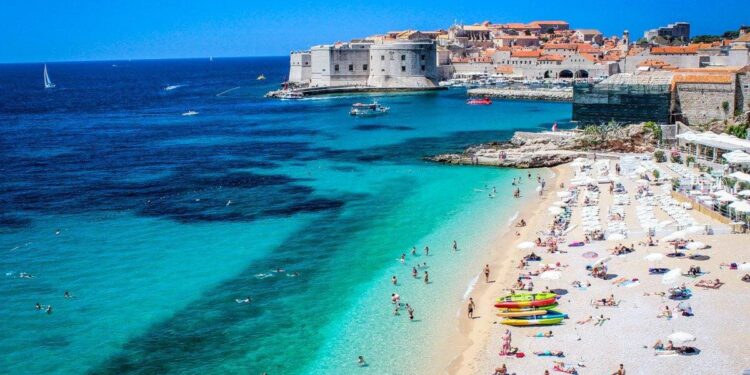Croatia experienced a modest increase in building permits issued in June, with figures rising 1.2% year-on-year, according to recently released data by SeeNews. The uptick signals a steady demand in the construction sector, reflecting ongoing investments in residential and commercial projects amid the country’s broader economic recovery. This gradual growth in construction activity comes as Croatia continues to attract both domestic and foreign investors, underscoring the sector’s role in supporting overall development.
Croatia Experiences Modest Growth in Building Permits Amid Economic Recovery
Recent data reveal a modest yet positive uptick in Croatia’s construction sector, with building permits increasing by 1.2% year-on-year in June. This gradual rise is reflective of the country’s broader economic recovery, as both residential and non-residential projects show newfound momentum. Analysts note that this growth is supported by increased investor confidence and improved access to financing, despite lingering uncertainties in the global market.
The breakdown of building permits issued highlights a diversified trend across different types of construction:
- Residential buildings: up by 2.5%, driven mainly by multi-family housing developments in urban centers.
- Non-residential buildings: steady growth at 0.8%, with a focus on commercial and industrial facilities.
- Infrastructure projects: remained relatively stable, reflecting continued government investment.
| Building Type | Change YoY (%) | Key Drivers |
|---|---|---|
| Residential | +2.5% | Urban multi-family housing |
| Non-residential | +0.8% | Commercial & industrial sectors |
| Infrastructure | 0.0% | Government public works |
Residential Sector Drives Increase as Construction Activity Gains Momentum
The upward trend in Croatia’s construction sector during June is predominantly attributed to a robust surge in residential building permits. This growth underscores a growing confidence in the housing market, fueled by increasing demand for new homes and renovation projects. Urban areas, in particular, have seen a significant uptick as younger families and investors seek to capitalize on favorable lending conditions and government incentives targeting residential development.
Key highlights driving this momentum include:
- Expansion of suburban housing projects that offer affordable living options outside major cities.
- Revitalization programs aimed at upgrading older residential units to meet modern standards.
- Increased private-sector investments supported by streamlined permit approval processes.
| Permit Category | June 2023 | June 2024 | % Change |
|---|---|---|---|
| Residential | 1,850 | 1,980 | +7.0% |
| Commercial | 740 | 720 | -2.7% |
| Industrial | 315 | 310 | -1.6% |
Experts Advise Streamlining Permit Processes to Sustain Building Sector Expansion
Industry specialists emphasize the critical need for simplifying the bureaucracy surrounding building permits to maintain Croatia’s upward momentum in the construction sector. With a modest 1.2% increase in permits recorded in June year-on-year, experts warn that procedural delays and complex approval layers could stifle further growth. Streamlining processes, they argue, would not only expedite project start times but also attract more domestic and foreign investment, nurturing a more vibrant construction market amid evolving economic conditions.
Key recommendations include:
- Digitization of permit applications to reduce paperwork and improve transparency.
- Setting strict timelines for each approval stage to prevent bottlenecks.
- One-stop shops for permits that consolidate multiple agency requirements under a single roof.
| Month | Permits Issued | Year-on-Year Change |
|---|---|---|
| April | 3,450 | +0.8% |
| May | 3,700 | +1.0% |
| June | 3,850 | +1.2% |
To Wrap It Up
The steady increase in Croatia’s building permits in June signals a sustained momentum in the country’s construction sector, reflecting ongoing confidence among developers and investors. As the market continues to navigate evolving economic conditions, these figures will be closely watched for indications of future growth and development trends across the region.
















